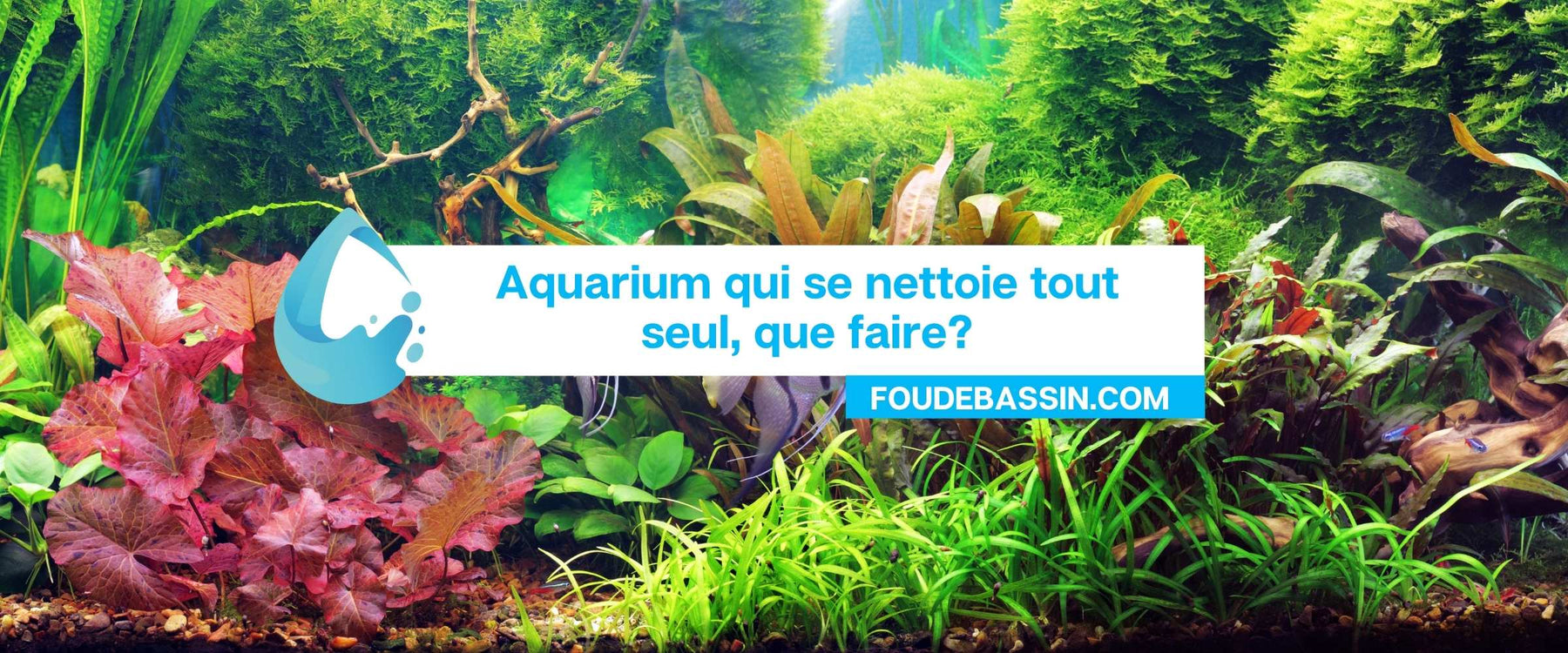Retrouvez ici les indispensables et meilleures ventes pour nos propriétaires de bassin.
Retrouvez ici les indispensables et meilleures ventes pour nos propriétaires de bassin.

Are you an aquarist, but don't have time to maintain your aquarium? Then discover the self-cleaning aquarium. This tank equipped with a hydrostatic device is very easy to set up. Simply add regular tap water to upgrade your aquarium. This action expels all the dirty and polluted water from the bottom of the tank which empties into a container through a pipe. But before going into explaining how it works in detail, let us introduce you to the advantages of the self-cleaning aquarium.
The multiple contributions of a self-cleaning aquarium are as follows:
- The water is never renewed in its entirety;
On the one hand, all these advantages save you time. Indeed, the maintenance of all the components of the aquarium becomes automatic. On the other hand, the purchase of cleaning utensils is no longer necessary. Concretely, you no longer have to empty your jar to wash it from top to bottom once a week.
It is an ecological solution which makes it possible to create self-sufficient vivariums. In fact, aquaponics is a process that combines the breeding of fish with the cultivation of plants. This technique makes it possible to create an ecosystem associating the animal with the plant. Originally, aquaculture concerns the breeding of fish in artificial ponds. Hydroponics is an activity that involves growing plants in aquatic environments.
The combination of the two practices creates a self-sufficient, self-regulating ecological system. The waste left by the fish is used as fertilizer for the plants that filter the pond water. This natural exchange allows animals, micro-organisms and plants to develop in harmony. This closed circuit is included in miniature in the manufacture of your self-cleaning aquarium. It offers you the pleasure of admiring both the colors of your fish and those of your flowers.
Consider setting up your aquaponic self-cleaning aquarium in a location that receives sunlight. To assemble its components, follow these steps:
The operating principle of an aquaponic aquarium is based on the sustainable recycling of waste. Concretely, the organic droppings of fish are digested by bacteria. Then, these organic materials are transformed into nutrients for the plants. The water that is constantly fed to the lid compartments contains these nutrients. The plants feed on these fertilizers and purify the water flowing into the reservoir, charged with oxygen.
To decorate the bottom of an aquarium, we can opt for the roots. But this natural element is not only used to improve the decor. On the contrary, the root perfectly complements the functions of plants, animals and microorganisms.
A root that is weighted down and firmly planted in the floor of the tank stabilizes aquatic plants, creates refuges for fish and supports for bacteria.
If you are an aquarist concerned about ecological issues, you can only adopt the new vivariums. Indeed, like any aquaponic aquarium enthusiast, you contribute to the preservation of the environment. What's more, you will have the comfort of satisfying your passion by avoiding the drudgery of repetitive maintenance.
And to learn more about setting up, making and decorating aquariums, check out the other articles on our blog!
Aquipond Greenstab - Natural treatment against pond algae It is a natural product that helps limit algae at any time. It also has a prevent...
View full detailsReduces the layer of silt in the pond by at least 40% Easy to use with less impact on biodiversity Prevents fermentation, bad odors. pH ...
View full detailsOrganic dye to block plant growth by limiting photosynthesis ORGANIC PRODUCT NON TOXIC TO HUMANS (DIVING) AND FISH. 100% NATURAL AND BIODE...
View full detailsThe positive effects of barley straw have been known to water enthusiasts for a long time. But currently barley straw is difficult to find and i...
View full detailsReduces at least 40% of the layer of silt in the pond Easy to use with less impact on biodiversity Prevents fermentation, bad odors. ...
View full details
Leave a comment